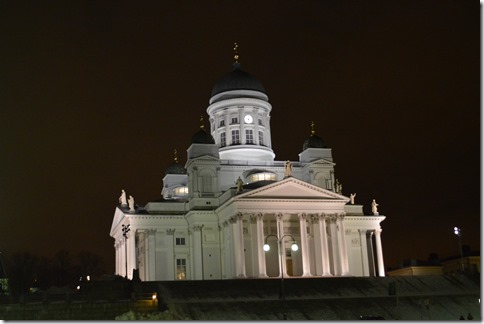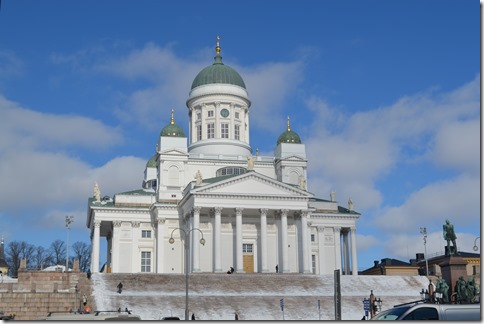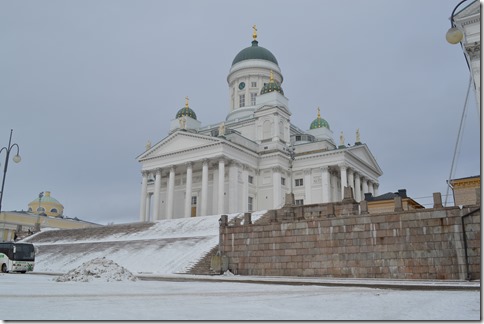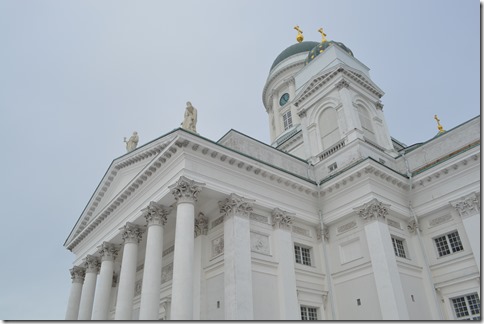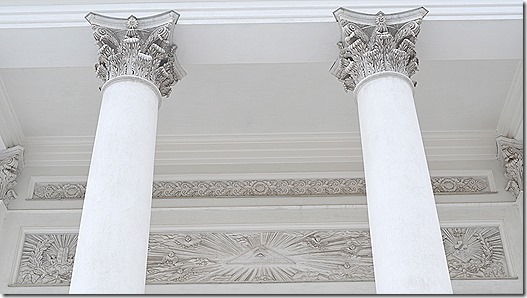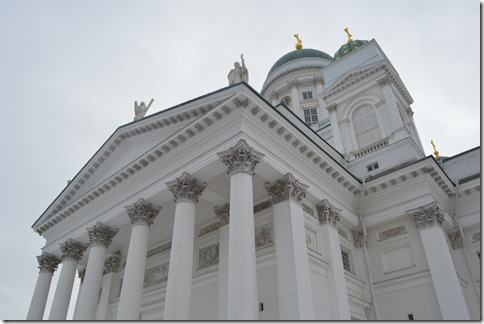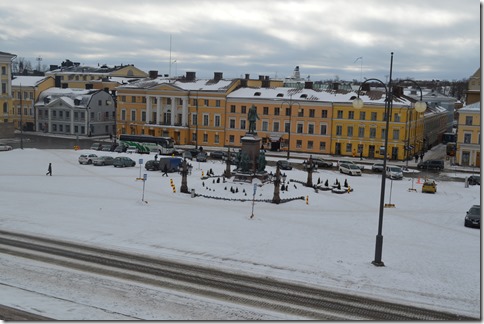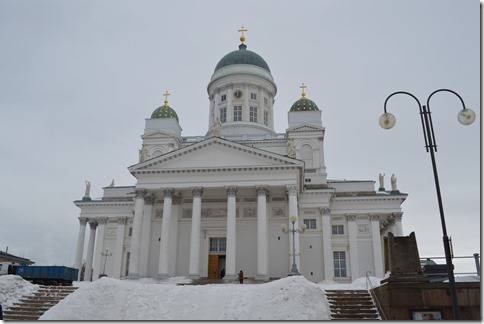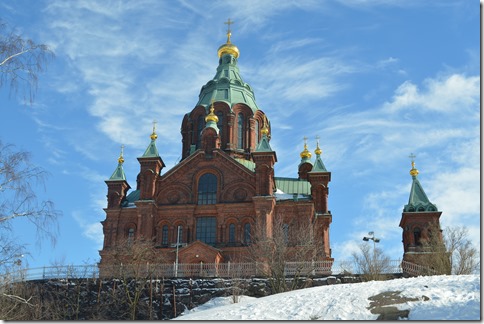Finland is a country where about 76% of the population are members of the Evangelical Lutheran Church of Finland. Finland was part of Sweden for more than five centuries from 1249 until the early 1800s. The Swedish Reformation in 1523 established Lutheranism and the break with the papacy.
Finland’s primarily agrarian economy was the stage for wars between the empires of Russia and Sweden for much of the 1700s. Finland was a pawn in the real history Nordic ‘Game of Thrones’ for Baltic Sea dominance. The distance between Helsinki and St. Petersburg, Russia is 250 road miles.
Helsinki Cathedral was built between 1830 and 1852 during a time the country was under Russian rule. Finland was an autonomous Grand Duchy of Russia from 1809 to 1917.
Helsinki Cathedral, Finland.
The Helsinki Cathedral building is neoclassical design with a distinctive green dome. The building is in the shape of a Greek Cross (+ or x) with a square center and four equilateral arms. All four exterior sides of the church are symmetrical.
Carl Ludvig Engel designed the church. He was a German architect born 1778 in Charlottenburg district of Berlin, Germany. Being an architect in the time of the Napoleonic Wars was not a stable environment for grand building investment.
Engel went to Tallinn, Estonia at the age of 31 as town architect. He moved on to St. Petersburg, Russia and Turku, Finland. In 1816 Engel was appointed a lead architect for Helsinki by Czar Alexander I. From 1824 until his death in 1840, Engel held the position Director of Public Housing in Helsinki.
Helsinki Cathedral.
If you are the type of person to find symbols interesting, then here is a pop culture symbol in our time and the past in the panel behind the columns.
The Eye of Providence on outside relief panel.
Symmetry of design is evident in this photo from opposite side of Helsinki Cathedral to other image in this post.
Helsinki Cathedral receives about 350,000 visitors each year. This is a central landmark of the city with a square in front.
View from Helsinki Cathedral steps, March 13, 2013.
There was a scheduled organ performance happening at Helsinki Cathedral about an hour after I went inside the church. I heard a couple minutes of organ melodies filling the church during the practice performance.
Over 20% of the 5.4 million residents of Finland have no religious affiliation.
Only slightly more than 1% of the population, about 58,000 residents are Finnish Orthodox, the second largest religious affiliation in Finland.
Uspenski Cathedral (1862-1868) in Helsinki is Finnish Orthodox.
Finnish is one of only four official EU languages not of Indo-European origin. The language is called a Uralic language and Hungarian is the most spoken Uralic language in Europe. Finnish truly sounded different from German and the Scandinavian languages I heard during my stay in northern Europe.
The organ music from Helsinki Cathedral was an unexpected experience on my Helsinki walkabout. Music is a common language everywhere.


